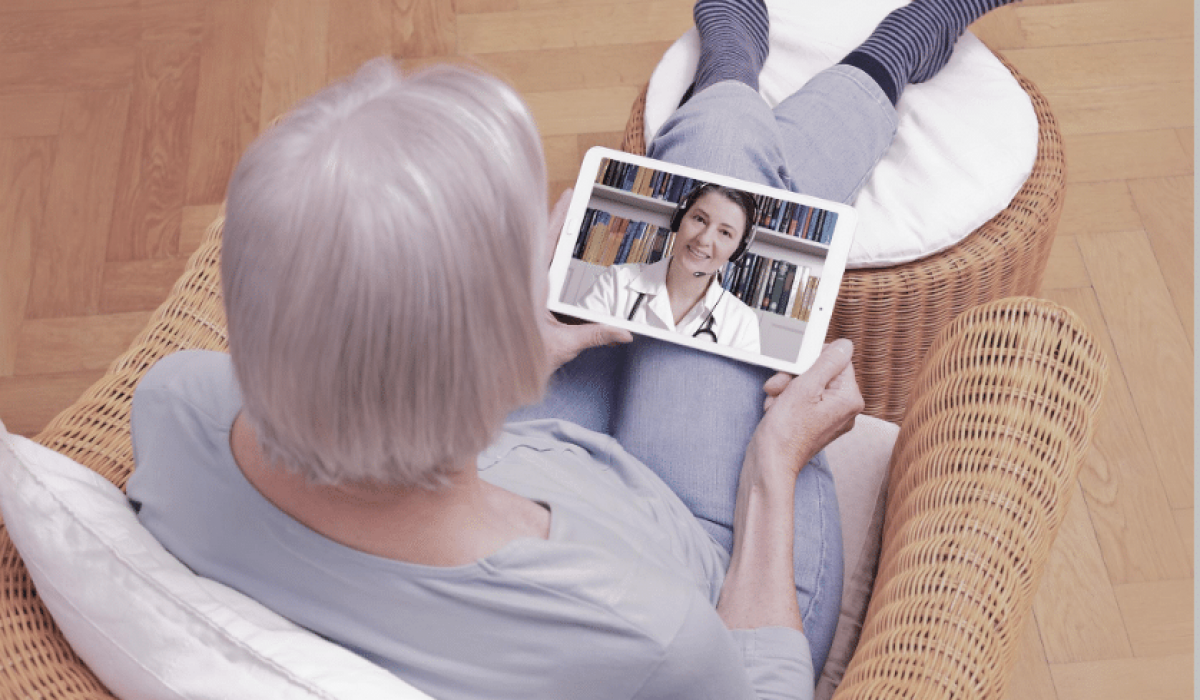The COVID-19 pandemic has pushed CMS to realize that there are more benefits to expanding telehealth services to Medicare and Medicaid than unanticipated side-effects. Telehealth has expanded greatly and patients continue to receive the quality care they demand and deserve. Although post-pandemic, CMS may not keep all of the changes published during these expansions, providers can very likely anticipate permanent changes to telehealth implementation and utilization and rely upon those changes going forward. The pandemic appears to have changed the delivery of modern healthcare forever. Telehealth is the great beneficiary.
Under the authority of the National Emergency Declaration of March 13th, CMS began issuing regulatory waivers and flexibilities to assist providers during the COVID-19 pandemic. That assistance included expanding the use of telehealth. The goal of expanding telehealth services was to ensure patients access to the care they need without entering healthcare facilities; and for providers to continue to provide quality care to patients without risking exposure to Covid-19. By increasing the use of telehealth, patients and providers practice social distancing and successful medicine without risking the well-being of either party by limiting their exposure to COVID-19.
As of April 30th, CMS has made three major expansions to telehealth regulations that ensure patients continue to receive necessary care during the pandemic. With each expansion, CMS provided additional flexibility regarding who can provide telehealth services, where they can be provided, and what technology is required to qualify as a telehealth service. Advis has prepared an overview of the expansions below. This overview is also a projection of the future of telehealth.
MARCH 17TH:
FIRST TELEHEALTH EXPANSION
CMS made the following two major changes regarding who is eligible to receive telehealth services and where they can receive those services.
- The first change allowed all Medicare beneficiaries to receive telehealth services rather than restricting them to beneficiaries located in rural areas.
- The second change made the patient’s home an eligible originating site. Previously, CMS allowed patients to receive telehealth services only when located in a healthcare facility. However, during this expansion, CMS has only allowed the providers to use codes associated with telehealth visits, virtual check-ins, and e-visits. Providers were still restricted in the type of services that could be provided to patients. Additionally, hospitals were not allowed to bill the originating site facility fee (HCPCS Q3014) for hospital outpatient department (“HOPD”) visits where patients were at home. Hospitals could only bill the facility fee for an HOPD visit if the patient was in a healthcare facility.
MARCH 30TH:
SECOND TELEHEALTH EXPANSION
CMS added more services eligible to be provided via telehealth in the following areas:
- Emergency Department visits, Level 1-5;
- Initial and Subsequent Observation and Observation Discharge Day Management;
- Initial hospital care and hospital discharge day management;
- Initial nursing facility visits (all levels) and nursing facility discharge day management;
- Critical Care Services – Domiciliary, Rest Home, or Custodial Care services, new/established patients;
- Home Visits, New and Established Patient (all levels);
- Inpatient Neonatal and Pediatric Critical Care, Initial and Subsequent;
- Initial and Continuing Intensive Care Services;
- Care Planning for Patients with Cognitive Impairment;
- Psychological and Neuropsychological Testing;
- Therapy Services, Physical and Occupational Therapy (all levels); and
- Radiation Treatment Management Services.
Given the expansion of types of services that could now be provided, CMS also expanded the types of professionals who could provide telehealth services to include licensed social workers, physical therapists, speech-language therapists, and occupational therapists.
Regarding billing for these practices, CMS stated in its interim final rule that providers should bill as they would typically bill for services. This means providers would not be restricted to use place of service (“POS”) 02 for codes located on the Medicare List of Telehealth Services Codes. Providers could use the POS they would typically use when furnishing services, which would allow physician offices to continue billing POS 11 and HOPDs to use POS 19 and 22 for telehealth services. Additionally, CMS created the new modifier 95 for practitioners to use to indicate that the service was furnished via telehealth.
APRIL 30TH:
THIRD TELEHEALTH EXPANSION
CMS is now allowing HOPDs to relocate to patient’s homes. If hospitals do relocate HOPDs to patients’ homes, then hospitals are able to bill the facility fee HCPCS Q3014 for the telehealth visit when the patient is located in their home. Only one relocation request is sufficient to make the relocation effective. Additionally, CMS stated that this change will be effective retroactively to March 1st, which allows hospitals to receive additional reimbursement for
telehealth services previously provided. CMS stated that this change will be effective retroactively to March 1st, which allows hospitals to receive additional reimbursement for telehealth services previously provided.
To relocate an HOPD to a patient’s home, the hospital must email its CMS Regional O_ ce with the following information:
- The hospital’s CCN;
- The address of the current HOPD;
- The address(es) of the relocated HOPD(s);
- The date which they began furnishing services at the new HOPD(s);
- A brief justification for the role relocation played in the hospital’s response to COVID-19;
- Why the new HOPD location (including instances where the relocation is to the patient’s home) is appropriate for furnishing covered outpatient items and services; and
- An attestation that the relocation is not inconsistent with their state’s emergency preparedness or pandemic plan.
Additionally, this expansion also allows hospitals to bill additional telehealth services on a UB, such as counseling, educational services, and therapy services, including when the patient is located in their homes. CMS also took into consideration the fact that many beneficiaries may not have technology that has video and audio capability. As such, CMS waived the video requirement for certain telephone evaluation and management services. Providers should consult the Medicare List of Telehealth Services Codes published by CMS to determine if a service can be provided through audio-only technology.
COVID-19 Telehealth Key Lesson
Although these expansions allow providers to conduct and be reimbursed for telehealth services during the pandemic, CMS has not indicated when or how much of the expansions will be reverted once the spread of the virus slows. At this point, for providers to anticipate any reversion to happen anytime soon, without permanent changes to telehealth regulations, is highly unlikely. The shift toward telehealth is in response to a pandemic. Healthcare providers are making it work. The data shows the number of telehealth visits increasing while patients are still receiving the care they need without risking exposure to the virus. And that, after all, is the point.
Published: July 16, 2020





